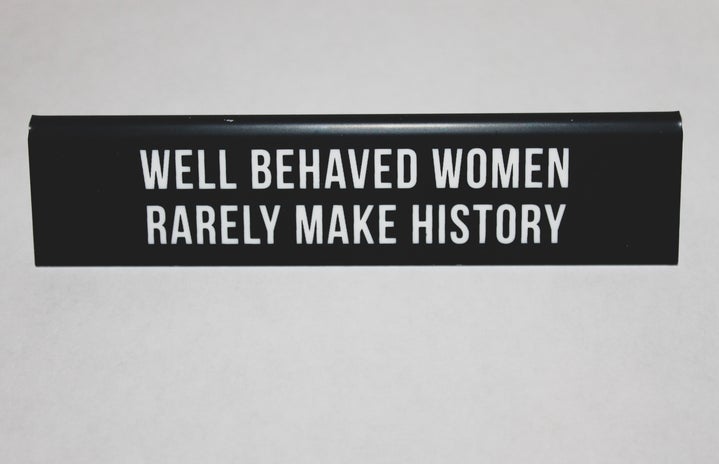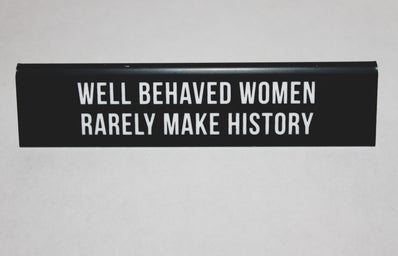Feminism is a very talked about topic right now. You can’t scroll through your Facebook news feed or read a magazine without reading something about feminism.
The term “feminism” wasn’t coined until the 1800’s by the French sociologist Charles Fourier. Yes, you read that correctly the word feminism was coined by a man. Now the term is up for debate, you might hear the terms “first wave,” “second wave,” and “third wave” thrown out in discussions and might have wondered what they meant. Well, since it is feminism week here at Her Campus Point Park, I decided it would be the perfect time to decode these popular terms. With the help of Dr. Jehnie Reis, a history professor here at Point Park who is also currently teaching a course called “Foundations in Feminism: Women’s History in the Western World,” you’ll definitely have a better understanding.
Let’s start from the very beginning: First wave feminism is where it all started. But what does it mean? Well, to be honest no one really knows who coined the “wave” terms, but we’ve used them since about the 1970s to identify the eras of feminism. Think of it as how we describe certain parts of history; the Harlem Renaissance, or the Victorian era, etc. It’s a way to describe a certain point of time in culture, in this case feminism. Now, try not to use your 2015 ideas when trying to understand first wave feminism, because it won’t work. Remember these women were women of their time and the role of a women was different.
“First wave feminism is partially about women getting the right to vote and having a political voice, but what came out of wanting to vote and have a political voice was just to have a public role in life outside of the home. “ Dr. Reis explained.
So we’ve come a long way from just wanting the right to vote and having a life outside of just hanging around our homes. Remember, even though these women wanted equality in voting, they did not want equality with men. They still had set ideas on what roles the genders played. Males being the logical ones and women being the caring and emotional caregivers.
You probably want to know how we grew from just being satisfied with voting to wanting more rights… well, Dr. Reis explained that also.
“Second wave feminism is really that equal rights, equal pay conversation, so it’s 1960s, it’s much more about being seen as the same as men and people not seeing differences because of gender.”
During second wave feminism, equality was a big deal. Not only do you have this new wave of feminism, but you also have the civil rights movement, and people are becoming more open to having equality. But we’re still growing, and of course that brings us to third wave feminism:
“Third wave feminism is a response to first and second wave feminism and a recognition that first and second wave is only geared at middle class white women. It’s acknowledging that not all women fall into that middle class white world and that you need to ask different questions, and acknowledge different groups of women.” Explained Dr. Reis.
If third wave sounds more familiar to you, it’s because we’re still in it, but according to Dr. Reis there has been a transition because of the term feminism. Remember earlier in the article where I mentioned feminism was coined by a white French male? Well, according to Dr. Reis, that term to a lot of people doesn’t fit non-western countries. Other terms like “womenism” are being used, because a lot of the feminist views may not work well in Middle-Eastern countries or other part of the world. A lot of feminism views don’t even really work for minorities here in the United States. But like the rest of the waves things will change.
Here is everything you need to know about the “waves” of feminism. Right now we’re in third wave but as history has shown, culture changes, people change, and ideas change. So even though this is feminism as we see it now, doesn’t mean it will be like this forever.

